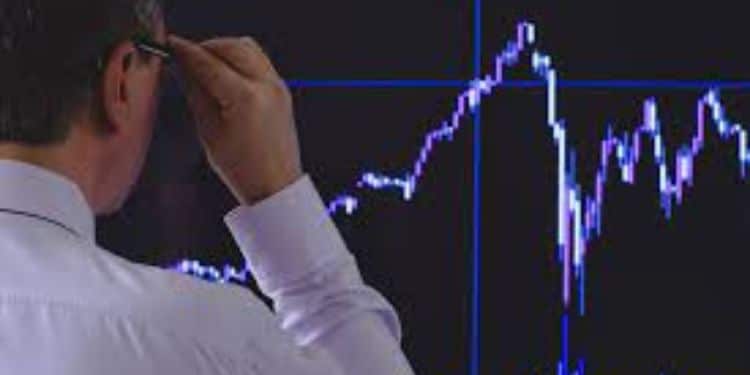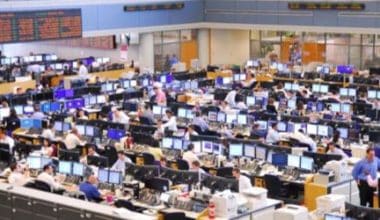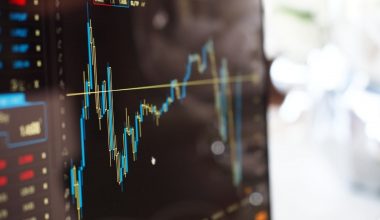Analysts, investors, and traders can use volatility as a statistical indicator to determine how evenly distributed the returns are. An asset’s volatility is inversely correlated with the risk it entails. This indicates that the investment could result in significant gains or terrible losses. Hence, we will be going down to explain more details on stock price and implied volatility.
Volatility
Volatility is a gauge of how frequently the price of security changes over time. It shows the degree of risk connected to a security’s price fluctuations. Investors and traders estimate a security’s volatility to analyze historical price fluctuations and forecast future price movements. Using either the beta or the standard deviation, volatility is calculated. The standard deviation quantifies the degree of price dispersion in security. The volatility of a securities in relation to the market as a whole is determined by its beta. Regression analysis can be used to compute beta.
Types of Volatility
Types include:
1. Historical Volatility
Historical volatility, commonly referred to as historical volatility, is a statistical measurement of the dispersion of returns from a specific asset or market index when examined over a specific era. A financial instrument’s average deviation from its average price over a specified time period is typically used to calculate historical volatility. Although there are different ways to figure out this number, the standard deviation is frequently employed to describe realized volatility. High historical volatility is a sign of dangerous security, yet in some trades, it is not always a bad thing since both bullish and bearish conditions can be risky. Implied volatility (forward-looking) defines the relative values of asset prices in regard to these two measurements, with historical volatility (backward-looking) serving as a baseline measurement.
#2. Implied Volatility
The term implied volatility, which is a typical element of, describes the estimated volatility of an asset. Although implied volatility does not predict the direction in which the price of the asset will move, it does show how the market expects volatility to be in the future. In a bear market, an asset’s implied volatility typically increases because the majority of investors believe that its price will keep falling over time. In a bull market, it declines because investors think the price will eventually increase. This results from the widespread perception that riskier investments are made during down markets than during bull markets. One metric used by traders to forecast future changes in an asset’s price based on a number of prognosticating factors is implied volatility.
Why Volatility Matters?
#1. Volatility Affects Trader Sentiment
Financial data analysis must include a market sentiment study. As a result of the financial market’s stochastic behavior, prices of assets traded there frequently fluctuate up and down on a daily basis. Despite these price changes, hundreds of millions of investors all over the world still put their money at risk in the financial market in the hopes of earning returns down the road. Investors are interested in the volatility of the financial markets because high levels of volatility frequently come with the possibility of substantial gains or losses at the expense of heightened uncertainty. Investors may decide to avoid the markets if volatility is really high out of concern for their money. In an effort to increase their profits, other traders can take on greater risk.
#2. Volatility Affects Trading Costs
Volatility is a reality of life in the world of investing, and it influences or directs a variety of choices that investors must make in the market. significant volatility generally entails significant inherent risk, but it also indicates tremendous payoff potential. Market price fluctuations are a source of profit, but extreme volatility also entails significant dangers. High volatility generally causes the spreads of underlying assets in markets to expand. This may have a direct effect on total profit potential or investment objectives. This is evidenced by the considerable volatility seen in the underlying assets during the publication of significant economic news and events.
How to Calculate Volatility
Calculating the standard deviation of a security’s prices over time is the easiest method for identifying a security’s volatility. The following steps can be used to accomplish this:
- Assemble the security’s historical pricing.
- Calculate the security’s historical average price (mean).
- Calculate the difference between the average price and each price in the set.
- Divide the discrepancies from the preceding step by two.
- Add up the differences in squares.
- Find the variance by multiplying the squared differences by the total number of prices in the set.
- Take the number you calculated in the previous step and square it.
Stock Price Volatility
Investors frequently utilize market volatility, which describes the size and frequency of price variations in the stock market, to assess risk by aiding in the prediction of future price movements. Market volatility is the frequency and size of price changes, whether they be upward or downward. The market is deemed to be more volatile when there are larger and more frequent price movements.
What Drives Stock Price Volatility?
Among the factors that may increase volatility are:
#1. Political and Economic Factors
When governments decide on trade agreements, laws, and policies, they play a significant role in regulating industries and have the power to have an impact on an economy. Investor emotions can be triggered by anything, including speeches and elections, which affect stock prices. Economic data is important because investors typically respond favorably when the economy is performing well.
#2. Industry and Sector Factors
Volatility can be brought on by particular occurrences in a given sector or industry. For instance, a significant weather occurrence in a key region for oil production could push up oil prices. As a result, companies involved in oil distribution may see an increase in stock price since they stand to gain, while companies with high oil costs may see a decline in stock price. Similar to the previous example, more government regulation in a particular industry may cause stock values to decline due to higher compliance and labor costs that may have an influence on future earnings growth.
#3. Company Performance
Volatility might affect a single company rather than the entire market. Positive news can boost investors’ confidence in the company, such as a solid earnings report or a new product that is delighting customers. If a lot of people try to purchase it, the greater demand may help to drive up the price of the stock.
On the other hand, a stock price might be negatively impacted by a product recall, data breach, or inappropriate executive behavior when investors sell off their stocks. This good or bad performance may also have an effect on the larger market, depending on the size of the company.
Implied Volatility
A measure that measures the market’s perception of the possibility of price movements for specific securities is known as implied volatility. Implied volatility can be used by investors to forecast future movements, supply, and demand, and is frequently used to price options contracts. Implied volatility is not the same as historical volatility, which gauges prior market moves and their actual outcomes. Historical volatility is sometimes referred to as realized volatility or statistical volatility.
How Implied Volatility (IV) Works
Implied volatility is the market’s prediction of a security’s price movement that is most likely to occur. It is a statistic used by investors to predict future changes in a security’s price (volatility) based on specific predictive criteria. The symbol sigma (for implied volatility) is used to represent it. It is frequently regarded as a substitute for market risk. Over a predetermined time range, it is frequently expressed using percentages and standard deviations.
Implied volatility, as it relates to the stock market, typically rises in negative markets when investors anticipate a long-term decrease in asset values. When the market is bullish, IV declines. Investors hold this view when they think prices will eventually rise. For the bulk of equity investors, bearish markets are unfavorable and more dangerous.
The future course of the price change is not foreseen by IV. For instance, high volatility denotes a significant price swing, although the price may swing either up (extremely high) or down (very low) or alternate between the two. Low volatility indicates that significant, erratic changes in price are unlikely.
Optionality and Implied Volatility
One of the determining variables in options pricing is implied volatility. Contracts for buying options give the holder the choice to buy or sell an asset at a specified price for a predetermined amount of time. Taking the option’s present value into account, implied volatility approximates the option’s future value. increased premiums are associated with increased implied volatility in options, and vice versa.
The implied volatility is dependent on likelihood, so keep that in mind. This means that it is just a projection of future prices rather than a prediction of their future direction. Although implied volatility is taken into account by investors when making investment decisions, prices themselves may be impacted by this reliance.
The price of an option may not always follow the expected trend. Although implied volatility is closely associated with market opinion, which in turn affects options pricing, it does help to take other investors’ actions with the option into account when evaluating an investment.
Why Is Implied Volatility Important?
One of the inputs required by options pricing models is future volatility. Though the future is uncertain. Therefore, the market’s most accurate assessment of those assumptions is the actual volatility levels that are reflected by option pricing. One can buy or sell options if they believe future volatility will be different from the indicated volatility in the market.
How Is Implied Volatility Computed?
Given that implied volatility is incorporated into an option’s price, the formula for an options pricing model must be adjusted to solve for volatility rather than price.
What Does High Volatility Mean?
A stock is said to have high volatility if its price experiences large swings between recent highs and lows in a brief period of time.
What Does Volatility of Life Mean?
Volatile, which derives from the Latin volatiles and means “fleeting, transitory,” always connotes a quick, drastic change.
What Is Volatility in Forex?
Volatility is a general phrase that describes changes in asset prices. Over a certain time period, it calculates the difference between the opening and closing prices.
What Is Volatility in Cryptocurrency?
Any cryptocurrency with regular, significant price swings in either direction is said to be volatile.
What Causes Volatility?
Investor sentiment is reflected in volatility at any particular time. Typically, economic or policy factors, such as shifts in other markets, increases in interest rates, and the Fed’s current monetary policy, are what increase market volatility.
Related Posts
- Implied Volatility (IV): Formula and Calculator (+detailed steps for calculating IV)
- Implied Volatility Options; How to Identify High & Low Volatility Options
- IV Crush: Implied Volatility Crush Overview (+ tips on how to avoid them)
- Understanding the difference between Stocks and Forex






